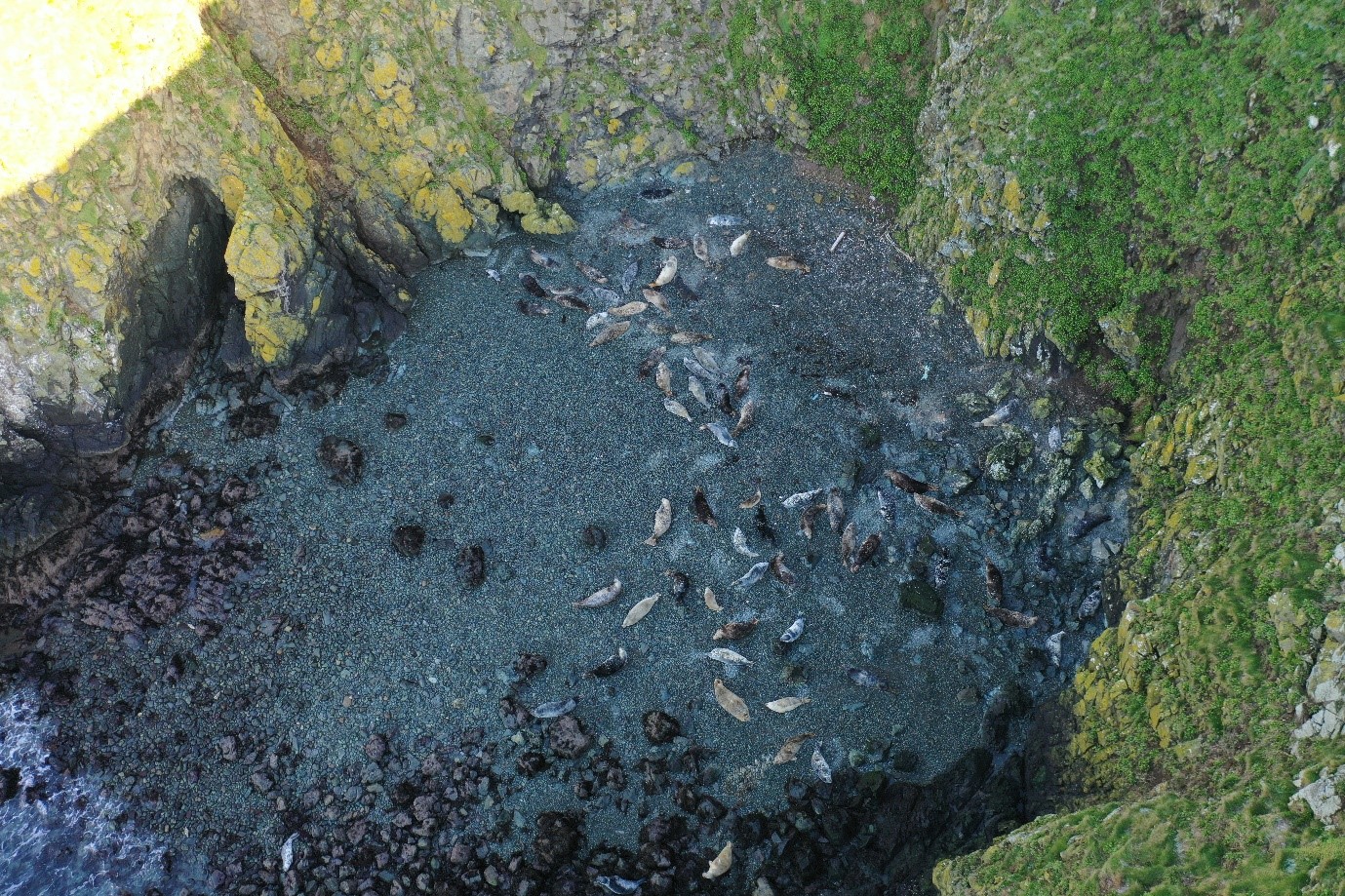
Seals are an integral part of Dublin Bay’s marine biodiversity, frequently observed along the coast from Sandycove to Bull Island and within the Dublin Port area. Despite large-scale marine construction works currently underway as part of the second phase of Dublin Port’s Masterplan 2040 (MP2), the local seal population remains healthy and thriving, as revealed by a comprehensive new survey.
The MP2 project involves extensive piling operations at the port’s easternmost point to construct two new ferry berths. As part of these works, Dublin Port Company funded a major study of seals in Dublin Bay and nearby waters, recently published in the Royal Irish Academy journal Biology and Environment.
Haul-out sites are important for seals in Dublin Bay as they enable them to carry out essential functions such as resting, pupping, and moulting. Knowledge of the location and use of these sites is crucial for conservation management to ensure they remain available and undisturbed during key times of the year. The same haul-out sites were used consistently throughout the survey period and align with previous studies, suggesting no changes in their use have occurred.

Multiple grey seals hauled out on Lambay Island. Photograph: Irish Whale and Dolphin Group (IWDG)
A total of 10 seal haul-out sites were surveyed, mostly using unmanned aerial vehicles (UAV). Overall, grey seals were more abundant, with maximum counts of 326 in October and 300 in July. Harbour seal numbers peaked at 117 in July.
Most grey seals were recorded on Dalkey, Lambay, and St Patrick’s islands and on Ireland’s Eye, while most harbour seals were observed at Rush Head, Lambay Island, and North Bull Island, with small numbers recorded at Sandycove.
This finding is significant given the extensive work being carried out in Dublin Port and demonstrates that mitigation and monitoring efforts have been effective.
Dublin Port engineer Eamon McElroy commented: “It is great to see a healthy and thriving seal population in Dublin Bay. We take our environmental responsibilities seriously and seek to operate in harmony with the Dublin Bay Biosphere. Working with our partners, the Irish Whale and Dolphin Group, ensures that we responsibly monitor seal populations and can respond to any changes that occur.”
Simon Berrow, Irish Whale and Dolphin Group CEO, noted: “We are grateful to Dublin Port not only for implementing strict mitigation measures to ensure there is no impact on local marine mammal populations in Dublin Bay and adjacent waters but also for supporting research and innovation, which will assist in mitigating similar developments elsewhere as well as contributing to our knowledge base.”




